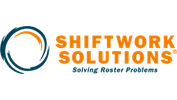Interview with Jim Huemmer, Principal, Shiftwork Solutions

Jim is the Director of Shiftwork Solutions, a specialist consulting firm where they optimise rosters, hours of work and shiftwork operations.
He has over 25 years of experience now working as a roster and hours of work specialist which includes operations in Australia and overseas. He founded Shiftwork Solutions to address the needs of day work and shiftwork operations.
He has developed solutions for hundreds of different organisations including refineries, power plants, maintenance operations, manufacturers, IT service providers, airlines, command centres, mining operations, shopping centres, casinos, health care services, hospitals and defence force operations.
He has also provided expert advice and expert witness testimony on several occasions regarding the use and safety of various hours of work, rosters and rostering practices in the Australian Industrial Relations Commission and Australian Magistrates Court.
From your perspective, what is the biggest challenge/key focus in the health and safety industry?
Jim: Doing more to improve employee health and safety in shiftwork operations.
Our findings indicate that shift workers are more vulnerable to mental and physical health issues, fatigue and safety risks than other workers due to factors, such as:
• Changing sleep and wake times requiring biological clock adjustments from workers
• Trying to sleep during the day reducing sleep quantity and quality
• Family and social pressures at home
• Additional shifts being financially appealing to employees
• Managers not having information and specialist knowledge to optimise roster decisions and properly manage fatigue related risks.
Shift workers also have a significant impact on productivity and business performance.
So, whether it is optimising roster design and hours of work, educating workers how to live better with shiftwork or providing additional fatigue management controls and information for decision- making, these opportunities not only improve employee health and safety but also business performance.
What trends we should expect to see in 2020 within the occupational health space?
Jim: Awareness and recognition of mental health as a potential risk in shiftwork operations will increase during 2020.
Just like fatigue, mental health is complex, varies by individual and is affected by both internal and external factors including working conditions and time off. Over the years, fatigue has obtained recognition as a risk worth considering and has been added to many assessments of risk in the workplace.
I believe mental health will follow a similar path for shiftwork operations (as fatigue) and we will start identifying potential risks and engaging with individuals more to assess how they are coping.
Western Australia has recently published a code of practice for mentally healthy workplaces that includes 15 work-related psychosocial hazards and risk factors to assist in the risk management process. This effort will contribute significantly to the identification and understanding of mental health risks and assist with improving health and wellbeing for workers.
What do you feel businesses continue to get wrong when it comes to their Health and Safety strategy?
Jim: Undervaluing the impact health and safety has on business performance and employee satisfaction in a shiftwork operation.
Many managers use traditional safety and incident statistics to measure their health and safety performance. In our experience, early signs of fatigue can be found in production, output,
attendance and quality measurements in a workplace.
Many operations identify fatigue related incidents, but few monitor and correlate production performance and fatigue. If we think about it from the shift worker’s perspective, on days when I’m
tired, I slow down and ‘pace’ myself to get through the long shift or long work week. I do not take on additional risk, but I may slow down and pay less attention to detail.
These behaviours lower overall production volumes and productivity and affect quality or yield. In our experience, these behaviours normally do not lead to a health and safety incident (near miss, equipment damage, product damage, injury, etc.).
Many times, health and safety related problems occur when business and employee needs have not been satisfactorily addressed. For example, if changes in workload demands are not addressed
properly, rosters can easily become understaffed and lead to higher hours worked without a proper break. A shortage of key skill sets can also lead to a dependency for work hours from certain
individuals. If employee needs for sleep, family and social activities are not addressed by time off components in a roster, employees will create their own breaks using sick leave and even time off without pay.
It is possible to use information from the business and directly from employees to measure the health and safety performance of your shiftwork operation. By improving health and safety for
shiftwork operations, we can also improve business performance and employee satisfaction.
What do you hope attendee’s will take away after meeting with you on-site at the OHS Leaders Summit Australia?
Jim: I would like managers to add Shiftwork Solutions to their OH&S network and reflect on
opportunities to improve their shiftwork operations.
Shiftwork is a unique workplace and there are bespoke, proven approaches to measure and improve these operations. Even if individual shiftwork areas are performing satisfactorily, it is possible to improve health and safety by:
• Providing health education, fatigue management and lifestyle information directly to workers, supervisors and managers, and
• Using a roster management system like ROSTERkey to improve 24/7 decision making.
ABOUT Shiftwork Solutions
Shiftwork Solutions optimises rosters, hours of work and the management of fatigue for many of Australia’s shiftwork operations. We provide specialist knowledge and advice not found from other providers.
Our consultative approach, processes and intellectual property have developed through 30 years’ experience working directly with managers, employees and unions in Australia to satisfy their competing business, employee and health and safety interests. This development continues as workplaces and technology evolve, and as health information and fatigue research grows.




